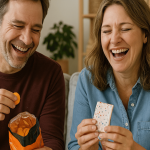In the event you reside with diabetes, you recognize that managing your blood sugar ranges inside shut ranges could be troublesome.
Particularly in case you are struggling to decipher the blood glucose ranges between excessive and low blood glucose ranges.
Much more confusingly, the signs of each circumstances could be very related.
So, how do you talk the distinction between hyperglycemia and hypoglycemia?
This text explains each hyperglycemia and hypoglycemia, signs, and how one can talk the variations between the 2 when it’s most essential.
What’s hyperglycemia?
Hyperglycemia is also called hyperglycemia, which implies blood glucose ranges are greater than regular. This will happen in folks with or with out diabetes.
Regular blood glucose ranges might differ, however in folks with out diabetes after fasting, blood glucose ranges (no meals for not less than 2 hours) are normally under 99 mg/dL.
100-125 mg/dl signifies prediabetes, fasting signifies diabetes, however something above 125 mg/dL.
For folks with out diabetes, hyperglycemia episodes are short-lived.
Nevertheless, folks with diabetes normally must train or take prescribed treatment to decrease their blood sugar ranges.
Folks with diabetes can have very excessive blood sugar ranges, which may flip into diabetic ketosidosis (DKA), which could be life-threatening if not handled.
What causes hyperglycemia?
For folks with out diabetes, greater than regular blood sugar ranges are normally brought on by consuming medication like sugar or steroids.
For folks with diabetes, hyperglycemia is the direct results of too little or no endogenous insulin within the bloodstream (producing the insulin the pancreas makes).
Having diabetes implies that your default blood sugar will at all times be excessive with out the suitable treatment to defeat it.
Acute hyperglycemic episodes are brought on by:
- Eat too little sugar or carbohydrates with too little insulin or medication
- There’s not sufficient train
- Affected by sickness or an infection
- Expertise with insulin resistance
- I am feeling burdened
- Too little sleep
- Particular medication
- dehydration
In actual fact, greater than 42 completely different variables may cause adjustments in blood glucose ranges in folks with diabetes.
What are the signs of hyperglycemia?
Signs of hyperglycemia are precisely the identical as many individuals expertise when recognized with diabetes, together with however not restricted to:
- Excessive thirst
- Dry the mouth
- Frequent urination
- Fruity scented breath
- Fatigue
- headache
- Physique ache
- Haze
- In excessive circumstances, weight reduction
- If this can be very long-term, it can’t be cured from an infection
- In excessive circumstances, DKA
You probably have skilled any of those signs and have present diabetes, verify for ketones instantly and search medical consideration.
You probably have skilled any of those signs and haven’t been recognized with diabetes, name your physician instantly for a take a look at for diabetes.
What’s hypoglycemia?
Hypoglycemia is also called hypoglycemia.
This happens when the bloodstream incorporates too little glucose for the physique to perform correctly.
This will happen in folks with or with out diabetes.
Hypoglycemia ranges might differ. Nevertheless, these under 70 mg/dL are thought-about low in folks, with or with out diabetes.
Individuals who expertise hypoglycemia want all types of glucose (sugar) to return blood sugar to regular ranges.
You probably have a not-so-poor hypoglycemic degree, consuming between 15-20 grams of carbohydrates will trigger somebody to return to regular vary, however that is dependent upon the individual.
If you’re not sure of the variety of carbohydrates that you must deal with typical hypoglycemic ranges, verify together with your physician.
It’s extra frequent to expertise extreme hypoglycemia when taking exogenous insulin (taken through insulin injections or by way of an insulin pump).
The liver normally discards glucose into the bloodstream to forestall catastrophic low ranges.
If an individual with diabetes is experiencing extreme hypoglycemia and the liver doesn’t do that, they might want to inject hormone glucagon (obtainable in a pen or inhaler).
This will trigger the liver to trigger the liver, releasing glucose into the bloodstream, and save lives.
Sadly, 25% of kind 1 diabetes (and people with kind 2 diabetes) are unaware that they can not detect hypoglycemia.
What causes hypoglycemia?
In folks with out diabetes, hypoglycemia could be the results of fasting, low-carbohydrate eating regimen, intense train, or sure drugs.
In folks with diabetes, hypoglycemia is the next:
- You take too many insulin or different diabetic drugs
- Too few carbohydrates
- Ingesting alcohol
- Adjustments in insulin routine or treatment
- Surprising adjustments to schedule
- Sizzling and humid climate
Even when hypoglycemic ranges could be detected, it is very important be capable to acknowledge signs of hypoglycemic ranges earlier than they turn out to be extra critical.
What are the signs of hypoglycemia?
Signs of hypoglycemia might differ, however normally embrace:
- Shakakkes
- sweating
- confusion
- Fatigue
- Quick Heartbeat
- Dizziness
- Hungry
- anxiousness
- In excessive circumstances, diabetes com sleep
- In excessive circumstances, loss of life
How will you talk the distinction between excessive and low blood sugar ranges?
In some circumstances, signs of excessive and hypoglycemic ranges might mimic one another. Particularly if it happens in a single day if you find yourself not awake on alert.
Confusion and fatigue have an effect on folks when blood sugar ranges are excessive and low.
Nevertheless, experiencing muscle ache with lethargy is a basic hyperglycemia.
Feeling anxiousness and stress with speedy heartbeat and sweat is a basic hypoglycemia.
You probably have issues deciphering between the 2, it’s useful to put on a steady glucose monitor (CGM), particularly for in a single day blood glucose ranges.
In the event you do not (or cannot) put on CGM, frequent testing of your blood sugar ranges will assist you to see what signs you might be experiencing.
Moreover, should you wrestle with noticing, getting a Diabetes Alert Canine (DAD) educated to detect each hyperglycemic and hypoglycemic ranges will assist you to detect and deal with these episodes earlier than they turn out to be medical emergency.
Many individuals are unable to detect variations in hypoglycemia, hyperglycemia, or hyperglycemia ranges when diabetes administration is slowed or blood glucose ranges will not be managed very tightly.
By carefully monitoring your blood glucose ranges and treating greater blood glucose extra aggressively, you’ll start to really feel signs of hyperglycemia early.
The identical recommendation applies to hypoglycemia ranges.
In the event you begin therapy for a glucose episode when your glucose reaches 80 mg/dl as an alternative of 70 mg/dL, chances are you’ll really feel it when your glucose is approaching 80 mg/dl, reasonably than not experiencing signs till your glucose reaches a extra harmful 60 mg/dl.
If you’re frightened that you could be not really feel your highs and lows, discuss to your physician and see the suggestions they could have for you.
Prevention
It’s best to forestall each hyperglycemia and hypoglycemia as a lot as potential. Monitor your blood sugar ranges rigorously and deal with each excessive and low ranges earlier than any issues come up.
Take all prescribed diabetes drugs and attempt to handle your sleep, bodily exercise, eating regimen and stress in a wholesome manner.
Hold a meals journal and be aware how you are feeling after consuming sure meals or doing sure actions, particularly if in case you have points with excessive or hypoglycemia ranges.
Attempt one of the best factor to handle your diabetes and yours.
Keep constant with regards to train, actions, eating regimen and drugs timing.
Search help from household and buddies and converse up together with your physician about what’s (and never) working with regards to diabetes administration.
Bear in mind, it is your life and if one thing is not working, you might be at all times allowed (and inspired) to alter it!
Conclusion
Folks with or with out diabetes can expertise excessive blood sugar (excessive) and low blood sugar ranges.
Fasting hyperglycemia ranges in folks with out diabetes are above 99 mg/dL, and excessive fasting blood glucose ranges in diabetic sufferers are above 125 mg/dL.
Hypoglycemia ranges are under 70 mg/dL, with or with out diabetes.
Excessive blood sugar ranges and hypoglycemia ranges could be quite a lot of causes, however for folks with insulin-dependent diabetes, it’s normally an issue that takes an excessive amount of insulin (hyperglycemia) or too little insulin (hyperglycemia).
Each ranges could be harmful to your well being, so it is very important discover every of your signs and act accordingly.
Signs of hyperglycemia embrace thirst, frequent urination, muscle ache, and fatigue.
Signs of hypoglycemia embrace anxiousness, stress, sweating and fatigue.
As a result of a number of the signs of hypoglycemia and hyperglycemia overlap, it is very important verify your blood glucose ranges often and often to see what signs you might be experiencing.
Moreover, utilizing a steady glucose monitor (CGM) could also be helpful. If you’re struggling to be unaware, use a Diabetes Alert Canine (DAD) that may sense excessive and low blood sugar ranges.
It is very important take precautions to keep away from dangerously excessive blood sugar and hypoglycemia ranges.
All the time take treatment as prescribed, carry snacks, deal with hypoglycemia, keep on schedule, and attempt to create wholesome sleep, stress administration and train routines.
Seek the advice of your physician about issues about frequent hypoglycemia and hyperglycemia ranges and how one can assist deal with and forestall them.










